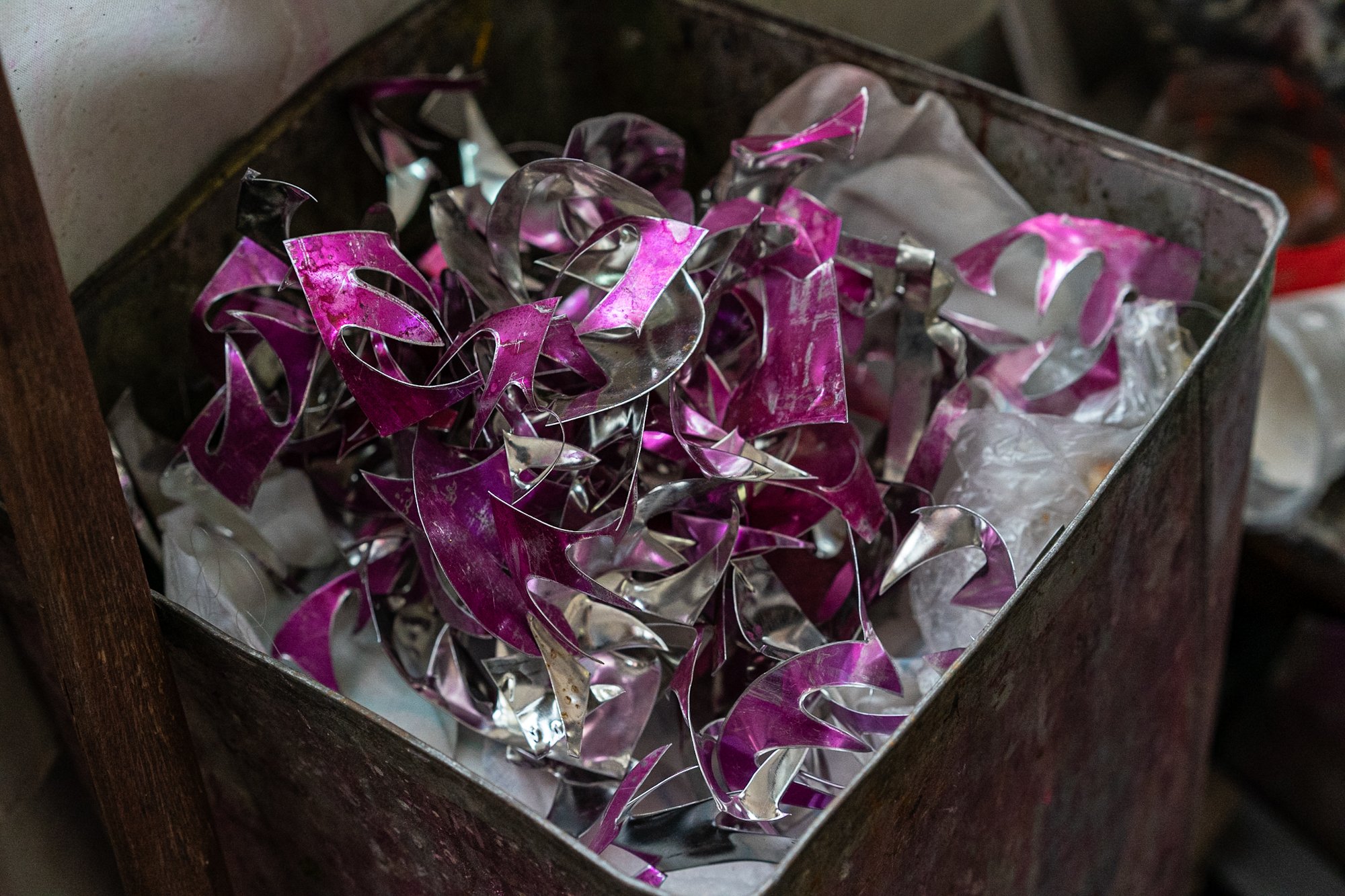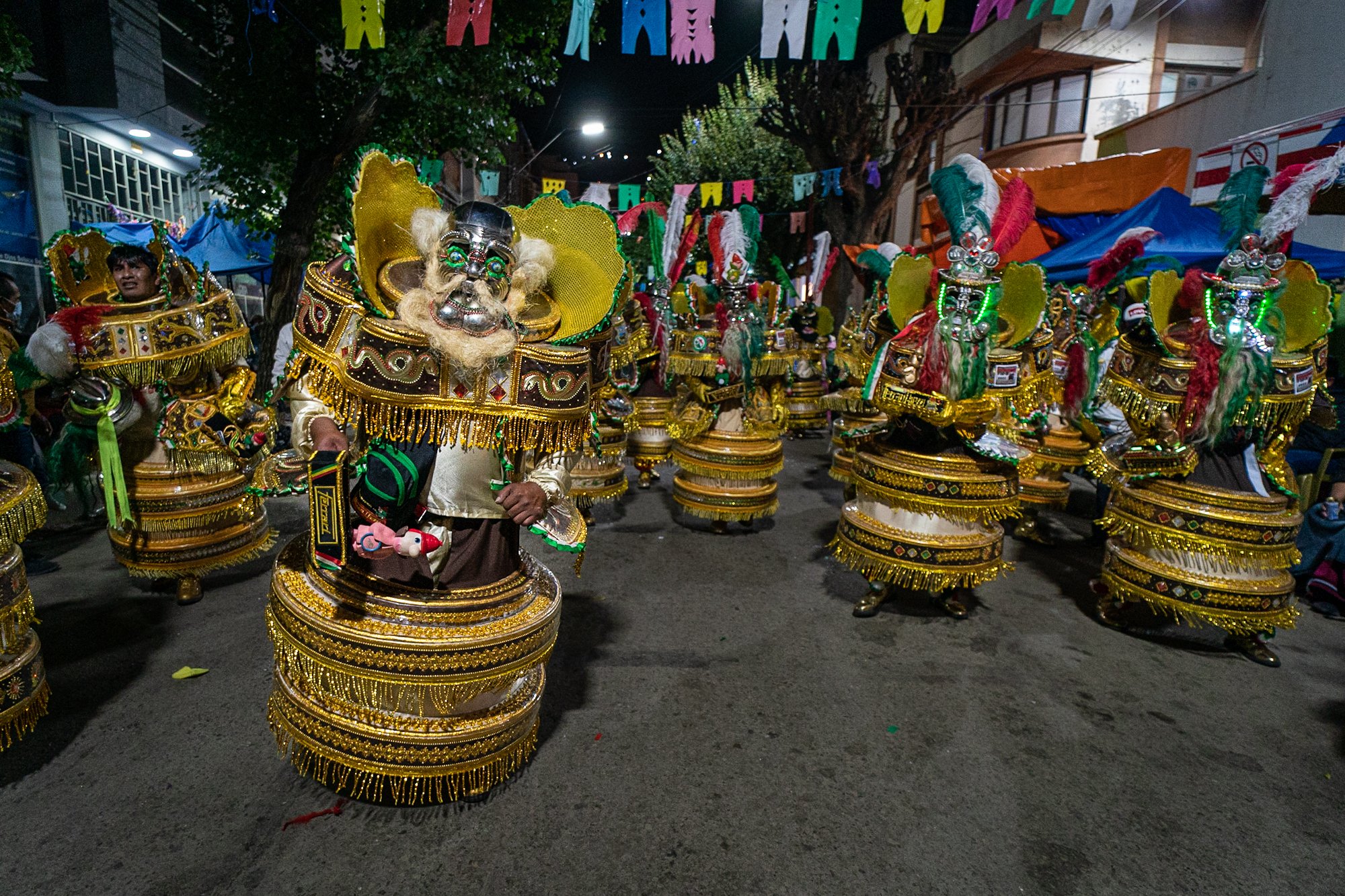The Oruro Carnival mask maker
One of the most fascinating aspects of the Oruro carnival is the traditional costumes each dance identifies itself with.
Some costumes are wonderfully embroidered and decorated garments, like the Caporal and the Tinku, and others add masks and head gear like the Incas and the Tobas. But the most elaborated and spectacular ones are made for the Diablada and the Morenada, two of the most famous dances of the Oruro Carnival.
The Diablada is the dance with the deepest, most antique roots, being documented quite some time before the Spanish invasion in a more archaic form.
The Morenada is more recent but still rooted in history, recalling the suffering of the black African slaves brought to the Andes to work in the mines.
If you would like to know more about the history of these traditional dances I will publish an article about them very soon.
Morenos masks ready to be decorated
Each male costume for the Morenada and Diablada is a masterpiece of tailoring, embroidery, metalwork, shoemaking, jewellery, hats, and requires highly skilled artisans and many, many hours of work to make. The female costumes are less built and rely more on the tailoring and spectacular embroidering, with simpler face masks when used.
Older style Morenada masks in the workshop
I met Berna Quispe de Cruz, owner of the Berna mask workshop in Oruro, and her son Jorge, who kindly allowed me to visit and photograph the workshop while they were applying the last finishing touches to a number of Morenada masks just the day before the Oruro Carnival main event. Seeing such skilled work is always fascinating, and I have to catch myself from getting mesmerised by seeing them work. I have to remind myself to keep shooting instead of just watching.
The metal for the masks is recycled from a very specific can of cleaning alcohol, the Caimán brand 16l can. The metal is cut to shape then hand beaten or embossed to create the face of a Moreno or any other decoration, like the wing shown here. The extra details on the mask, like the eyelashes, are added with tin solder, and the skull cap is assembled the same way. Click the images below to see a larger version.
Seeing the results is absolutely amazing. The finished mask can be painted or naked metal, it will have beard or facial hair added, according to the specific style chosen by the dance group for that year and the role of the mask. The male Morenos, for example, can be simple Morenos, Morenos Caporales or Achachi, with differences in the mask and headwear as well as the costume itself.
Here are some examples of the Morenada masks found during the main Oruro Carnival parade:
When you look at the whole costume during the main Oruro Carnival event, the Entrada, it is impressive indeed. But it’s only when you get really close and look at it attentively that you can really appreciate the masterful craftsmanship that is required to make such a work of art.
The holes above the mask eyes are for the dancer to see. These masks are unfinished: they still need their eyelashes, which are added through tin soldering, and other details. Click on the images below for larger.
As always, mastery of a craft is a beautiful thing to witness. The ease and economy of movement, the efficiency and the astonishing results. No one ever mentions the mask makers when talking about the Oruro Carnival, but I think they are unsung heroes behind the scenes, making the Entrada and the dancers look so incredible.
If you visit the Oruro Carnival (you should), get close when they are still and admire the costumes. You will be amazed.




























